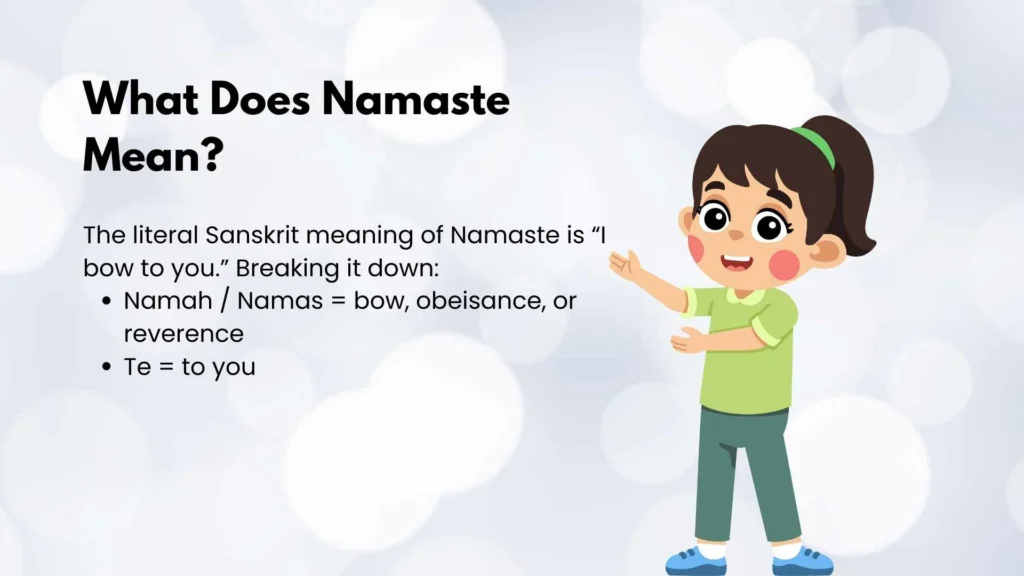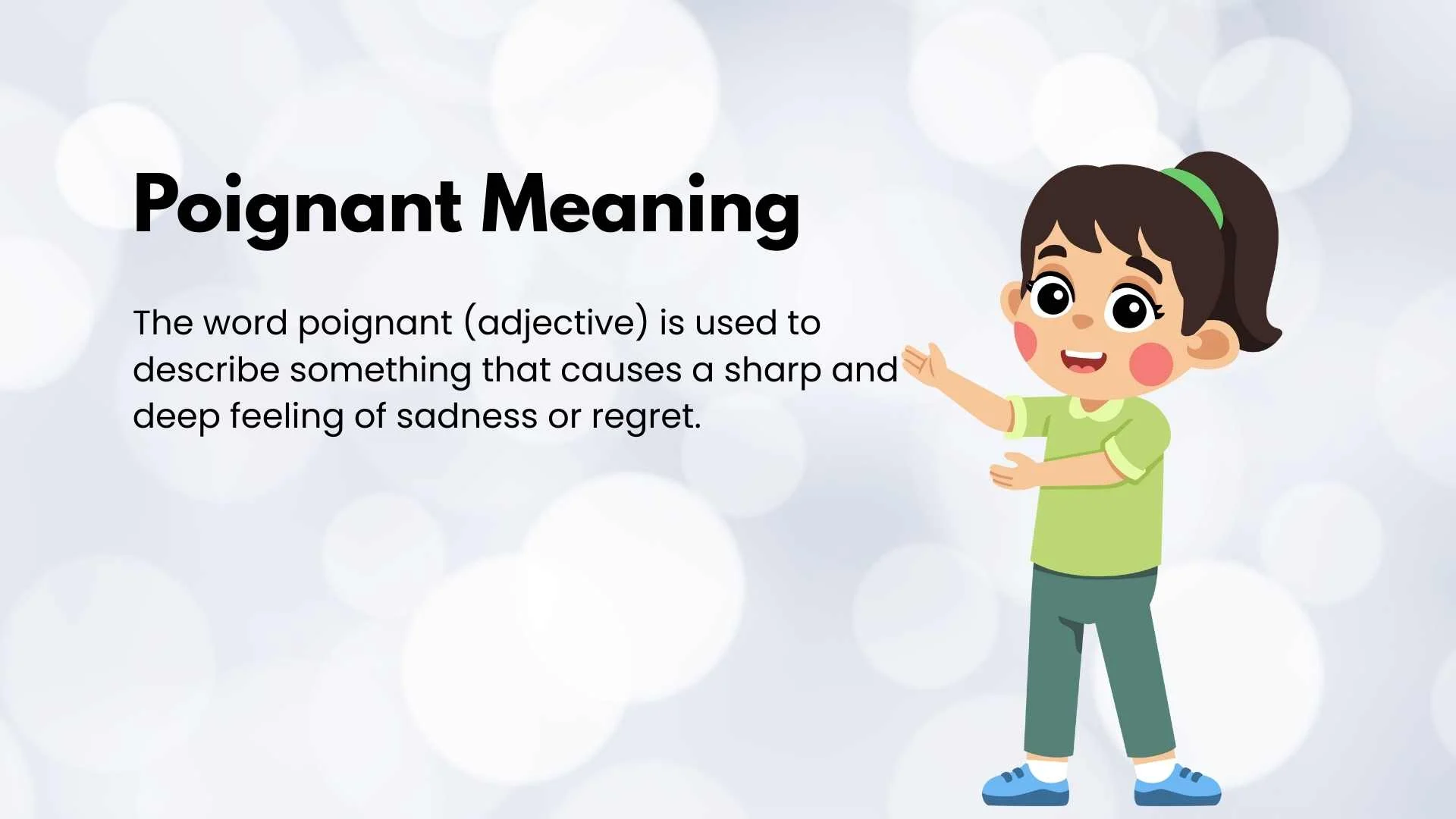Namaste is more than a simple greeting. It carries layers of cultural, spiritual, and social meaning that span centuries and continents.
Rizz Line Generator
Rooted deeply in Indian culture and Sanskrit tradition, Namaste has transcended borders, becoming a globally recognized symbol of respect, mindfulness, and goodwill.
This article delves into the meaning of Namaste, its gesture (Anjali Mudra), spiritual significance, and how to perform Namaste correctly.
What Does Namaste Mean?

The literal Sanskrit meaning of Namaste is “I bow to you.” Breaking it down:
- Namah / Namas = bow, obeisance, or reverence
- Te = to you
In essence, Namaste expresses acknowledgment of the divine or inner spirit within another person. It is not just a casual greeting; it conveys respect, goodwill, and humility.
Translation in different languages:
| Language | Word | Meaning |
|---|---|---|
| Sanskrit | Namaste | I bow to you |
| Hindi | नमस्ते | Respectful greeting |
| Urdu | نمستے | Salutation or acknowledgment |
| English | Namaste | I honor the divine in you |
This shows that Namaste in Hindi, Urdu, and English carries the same respectful intent, with minor linguistic nuances.
Key Concept: Using Namaste is a formal reverence, a recognition that the other person is worthy of honor and acknowledgment.
Origins of Namaste
Namaste origin can be traced to ancient India, where it was part of Vedic rituals and spiritual practices. Initially, it was a Hindu greeting, but it later became common in Buddhist traditions, especially in Southeast Asia.
The gesture has been documented for thousands of years, primarily in temples and scriptures. It was a way to show deferential respect to elders, teachers, and spiritual leaders. Over time, Namaste transcended religious boundaries, becoming a universal greeting in yoga and mindfulness practices worldwide, from California yoga studios to international conferences.
Common misconception: Is Namaste Japanese? No. Despite occasional assumptions, Namaste is exclusively Indian in origin, derived from Sanskrit.
Namaste vs Namaskar
While often used interchangeably, there is a subtle difference:
- Namaste – casual or everyday greeting, spiritual undertone
- Namaskar – formal greeting, often used in ceremonies or written communication
When to use each:
| Greeting | Context | Tone |
|---|---|---|
| Namaste | Daily interactions, yoga classes | Respectful, informal |
| Namaskar | Formal events, elders, ceremonies | Formal, ceremonial |
In practice, both convey respect and goodwill, but Namaskar emphasizes ritual and formality, while Namaste is widely embraced socially and spiritually.
The Namaste Gesture (Anjali Mudra)
The Namaste gesture, also called Anjali Mudra, is a physical expression of the greeting. Performing it correctly enhances the meaning of the words.
How to perform Namaste
- Hands in prayer position – palms pressed together
- Positioning – center at the heart (Heart center position) or third eye (Third eye bow)
- Slight bow – a gentle inclination forward
- Eye contact during Namaste – soft gaze or closed eyes for deeper respect
- Optional: verbal greeting, saying “Namaste” aloud
This simple act embodies respect, mindfulness, and recognition of the other person’s inner self.
Diagram of Anjali Mudra:
_____
| |
| | <- Hands pressed together
|_____|
|
| <- Slight bow from the waist
Variations
- Hindu greeting: hands at chest level
- Buddhist greeting: sometimes hands raised slightly higher
- Yoga instructor greeting: often combined with deep breath or Om chanting
The physical gesture reinforces the spiritual meaning of Namaste, making it a holistic greeting.
Spiritual Meaning of Namaste
The spiritual meaning of Namaste goes beyond etiquette. It symbolizes:
- Recognition of the divine within others
- Acknowledgment of the self and interconnectedness
- Humility, gratitude, and reverence
In yoga and meditation, joining head and heart during the gesture emphasizes unity between mind and soul. Teachers like Donna Farhi highlight that Namaste at the end of a yoga class is not merely a farewell—it is a mindful acknowledgment of shared energy and respect.
“Namaste is the bridge between spiritual intention and social interaction.”
Namaste in Everyday Life
In Indian culture greeting traditions, Namaste is omnipresent. It can be used:
- Meeting elders or respected individuals
- Entering homes or sacred spaces
- As a sign of respect in formal events
Social etiquette includes:
- Reciprocation – always respond with Namaste
- Slight bow – shows humility
- Eye contact during Namaste – conveys sincerity
- Gentle tone if spoken aloud
Namaste is also widely used in global contexts as a polite, non-contact greeting, especially relevant in health-conscious environments.
Namaste in Yoga
Yoga has played a significant role in popularizing Namaste worldwide. Yoga greeting norms include:
- Starting a class – acknowledges teacher and fellow students
- Ending a session – signals gratitude and closure
- Mindfulness practice – integrates breathing, meditation, and centering
Example:
At the end of a yoga class, the instructor may say:
“Let us close with Namaste, honoring the light within each of us.”
Key gestures in yoga context:
- Hands at heart center position
- Slight bow
- Optional verbal Namaste
This reinforces the energy exchange, and encourages students to greet yogis with mindfulness and respect.
Common Misconceptions About Namaste
- Not Japanese – Namaste is purely Indian in origin.
- Not just a hand gesture – the words and the intention matter equally.
- Not casual for all contexts – understanding when to bow and how to reciprocate is essential.
- Misuse in social contexts can dilute its meaning if not performed with sincerity.
Interesting Facts About Namaste
- Used in global diplomacy, yoga, wellness retreats, and online communities.
- Represented digitally via 🙏 emoji, symbolizing hands in prayer position.
- Some modern adaptations: Namaste signs in hotels, airports, and offices.
- Namaste is inclusive, transcending religion and emphasizing respect and human connection.
How to Practice Namaste Correctly
Step-by-step guide:
- Stand upright with relaxed shoulders
- Bring palms together at heart center (Anjali Mudra)
- Slight bow from the waist
- Focus eyes gently on the other person or close eyes
- Speak Namaste softly (optional)
- Reciprocate if greeted
Tips for beginners:
- Keep your breathing calm and natural
- Bow slightly, not exaggeratedly
- Ensure hands meet firmly but gently
- Incorporate in daily life gradually for natural flow
Mudra for greeting: Practicing regularly can create a habit of mindfulness, respect, and spiritual acknowledgment.
FAQs About Namaste
What does Namaste mean in Hindi/English/Urdu?
- Hindi: नमस्ते, English: I bow to you, Urdu: نمستے
Is Namaste religious?
- Originally Hindu and Buddhist, now widely spiritual and social
How to bow properly?
- Hands at heart center, slight bow, eye contact, verbal Namaste
Can anyone use Namaste globally?
- Yes, with awareness of cultural and spiritual significance
Difference between Namaste, Namaskar, and Anjali Mudra:
- Namaste – everyday greeting
- Namaskar – formal greeting
- Anjali Mudra – hand gesture used in both
Conclusion
Namaste is far more than a greeting. It embodies respect, spiritual acknowledgment, and human connection. Its origins in Indian culture, Sanskrit meaning, and usage in yoga classes worldwide highlight its timeless value.
By performing Namaste with awareness, sincerity, and proper gesture, you not only greet others but also honor the divine within them. Whether in daily life, yoga practice, or cultural exchange, Namaste remains a universal symbol of goodwill, humility, and respect.




